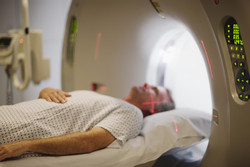MRI for predicting stroke onset
Every year 1.5 million patients suffer a stroke in the EU. Intravenous thrombolysis with recombinant tissue plasminogen activator is the only effective and approved specific treatment when administered within 4.5 hours of an acute ischaemic stroke episode. In nearly one fifth of the patients it is not possible to estimate the precise time of the episode making them unsuitable for thrombolysis. The EU-funded WAKE-UP(opens in new window) (Efficacy and safety of MRI-based thrombolysis in wake-up stroke: a randomised, double-blind, placebo-controlled trial) project has been designed for these patients. The consortium is using magnetic resonance imaging (MRI) to determine if stroke patients remain within the 4.5 hour therapeutic window. Based on this technique, patients waking up with stroke symptoms will be randomised for treatment with thrombolysis. During the first part of the project, image processing and software has been optimised for quantifying lesion volumes in stroke patients. Considerable work has gone into the image training of over 300 clinicians in 58 sites. Over 775 patients have been enrolled in the trial and 280 patients have been randomised. Data analysis is currently in progress, and partners are also examining the effect of thrombolysis depending on vessel occlusion or perfusion lesion. Overall, the WAKE-UP study addresses the massive and growing health problem of stroke management. The outcome of the clinical trial will provide unquestionable evidence for the efficacy and safety of MRI-based thrombolysis. It is anticipated that the project findings will change the guidelines of acute stroke management and become immediately implemented, harmonising stroke treatment across the EU. Long term this approach will allow specific treatment recommendations for acute stroke patients with unknown symptom onset. A 10 % absolute increase in the rate of patients with no or minimal deficit after stroke is envisaged for stroke patients through prompt thrombolysis treatment.







